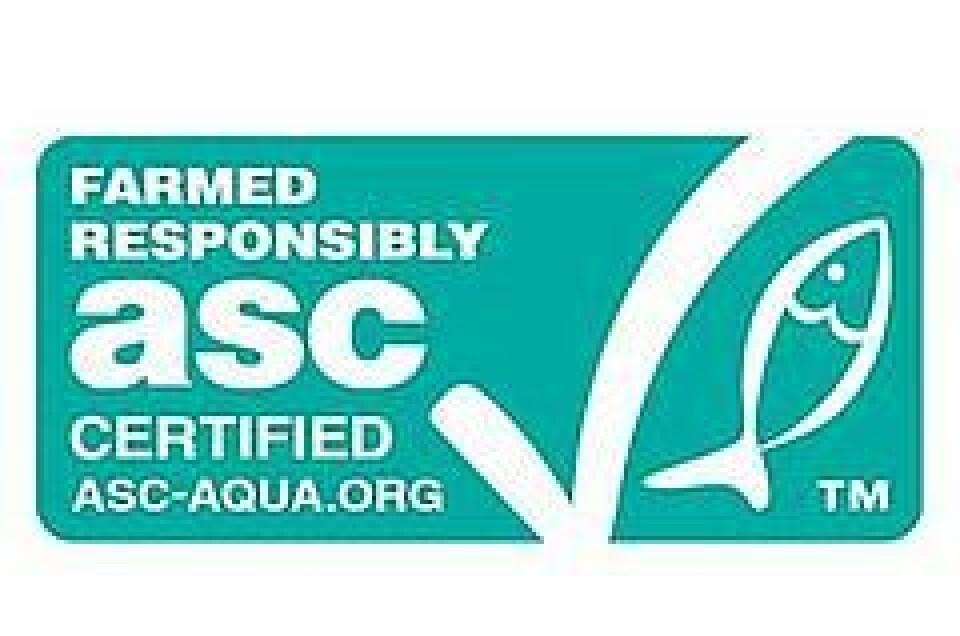
The World needs to produce twice as much food by 2050
Jason Clay from the WWF approached the salmon farming industry years ago about the potential for developing a certification scheme for the demonstration of sustainability in operational and environmental performance, as well as in the sourcing of raw materials for the manufacturing of fish feed. It is probably safe to say that Marine Harvest in Norway was the first company to get serious about initiating a relationship with the international environmental organization, but eventually others followed, culminating in the development of the Aquaculture Stewardship Council and its Certification programme.
Recently, Hannah Watts- journalism student at Michigan State University-wrote about the need for more food- including farmed fish;
Jason Clay is Senior Vice President of Markets at World Wildlife Fund and he's working to help 100 major production companies in forest products, fisheries, aquaculture, agriculture and finance throughout the world to produce more with less, be more efficient, and make their supply chains more sustainable. WWF works to conserve the world’s most important natural places and significantly change global forces to protect the future of nature and the planet. "Our work is what you'd expect from an organization that has a panda for a logo," quips Clay. "If we don't get how and where we produce food right, we can turn out the lights and go home."
Clay tells Kirk Heinze "The threat to the species is actually in producing more food and fiber for us. To put that into context we need, in the next 40 years we need to produce as much food as we have in the last 8,000. "If we double it by expanding to twice as much land, then there's going to be nothing left for nature," says Clay. "We need animal protein from efficient sources, but we need it to be produced environmentally sustainably." Humanity’s collective consumption and demand for natural resources has outgrown the world’s capacity for production, but Clay believes global markets will shift to protect the planet.
Unilever is one of the companies that have set sustainable production goals. By 2020, Unilever’s goal is to have 100% of its bio-based raw materials certified by third parties as sustainable. The company currently uses over 3,500 different raw materials in the production of its products. General Mills is setting a goal of having 50% of its raw materials be certified sustainable by 2020. The country of Ireland, the single biggest supplier of meat to McDonalds of Europe, has become the first country ever to commit to 100 percent of its food exports would be third-party certified by 2016. Clay attributes much of this activity by companies to “enlightened self-interest” and the company’s share of the market, “People see the rationale for this and are beginning to move forward with it, and that’s the kind of change we’re going to need if we are going to be able to maintain this planet going forward,” Clay says.
Along with convincing companies to make individual changes, Clay and the WWF guide companies in similar markets to work together. The Global Salmon Initiative is a group composed of 15 CEOs of major salmon producing companies. These companies are taking a collaborative approach to the issue of sustainability by sharing information and working cooperatively to make the market for salmon sustainable. They came up with a collective goal for 100% of their salmon production to be 3rd party certified sustainable by the year 2020.
Clay has seen a fundamental shift in global awareness and market value of large companies in the last 35 years and that it's in the companies' best interest to operate more sustainably. “In 1973, 83 percent of the value of a company was based on tangible assets, such as factories, production lines and fleets of vehicles,” Clay says. “Today, 81 percent of the value of a company is based on intangible assets, like assets, reputation and brand value.”
WWF recently partnered with National Geographic to launch the “Make Each Choice Count” campaign. The campaign produces short videos that demonstrate how we, as every day consumers of goods, leave an imprint on our planet. A few examples include, “How much water does it take to produce a latte?” and “How much of a rainforest does it take to produce a laptop?” The campaign aims to more effectively educate individuals 35 years of age and younger though social media platforms “as they’re the first generation that’s going to be affected by climate change and maybe the last generation that has a real ability to impact it without huge costs,” says Clay. “We’re trying to make people think laterally and become more aware of issues they haven’t thought about before,” Clay says. “By understanding the impacts, we can make our choices count. We want to teach people how to think, not what to think. "I think we've gone from a theory to proof of concept," adds Clay. "Companies are actually taking the lead and now we can take a step back and really monitor and measure whether they're doing what they say they're doing and really help them understand how to tackle new problems because we're not through this yet. To get to 2050 when population peaks, we're going to have to be very, very efficient."






















































